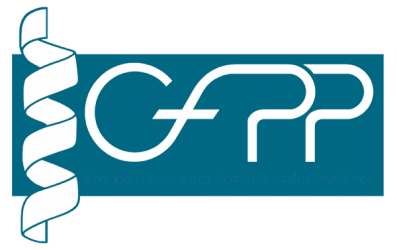Stapled α-helical versions of aurein 1.2 were developed using biocompatible conjugation chemistry between dicyanopyridine and 1,2-aminothiols. A double-cysteine variant stapled with perfluoro azobenzene at i, i + 7 exhibited a change in overall helicity induced by light. The applicability of this staple to attach to cysteine residues in i, i + 7 positions of a helix in a model protein is demonstrated.
Antibiotic resistance is an escalating global health threat. Due to their diverse mechanisms of action and evasion of traditional resistance mechanisms, peptides hold promise as future antibiotics. Their ability to disrupt bacterial membranes presents a potential strategy to combat drug-resistant infections and address the increasing need for effective antimicrobial treatments. Amphipathic α-helical peptides possess a distinctive molecular structure with both charged/hydrophilic and hydrophobic regions that interact with the bacterial cell membrane, disrupting its structural integrity. The α-helical amphipathic peptide aurein 1.2, secreted by the Australian frog Litoria aurea, is one of the shortest known antimicrobial peptides, spanning only 13 amino acids. The primary objective of this study was to investigate stapled and photoswitchable modifications of short helical peptides employing biocompatible chemistry, utilising aurein 1.2 as a model system. We developed various stapled versions of aurein 1.2 using biocompatible conjugation chemistry between dicyanopyridine and 1,2-aminothiols. While the commonly employed stapling pattern for longer staples is i, i + 7, we observed superior helicity in peptides stapled at positions i, i + 8. Molecular dynamics simulations confirmed both stapling patterns to support an α-helical peptide conformation. Additionally, we utilised a cysteine-selective photosensitive staple, perfluoro azobenzene, to explore photoswitchable variants of aurein 1.2. A double-cysteine variant stapled at i, i + 7 indeed exhibited a change in overall helicity induced by light. We further demonstrated the applicability of this staple to attach to cysteine residues in i, i + 7 positions of a helix in a model protein. While some of the stapled variants displayed substantial increase in helicity, minimal inhibitory concentration assays revealed that none of the stapled aurein 1.2 variants exhibited increased antimicrobial activity compared to the wildtype.


